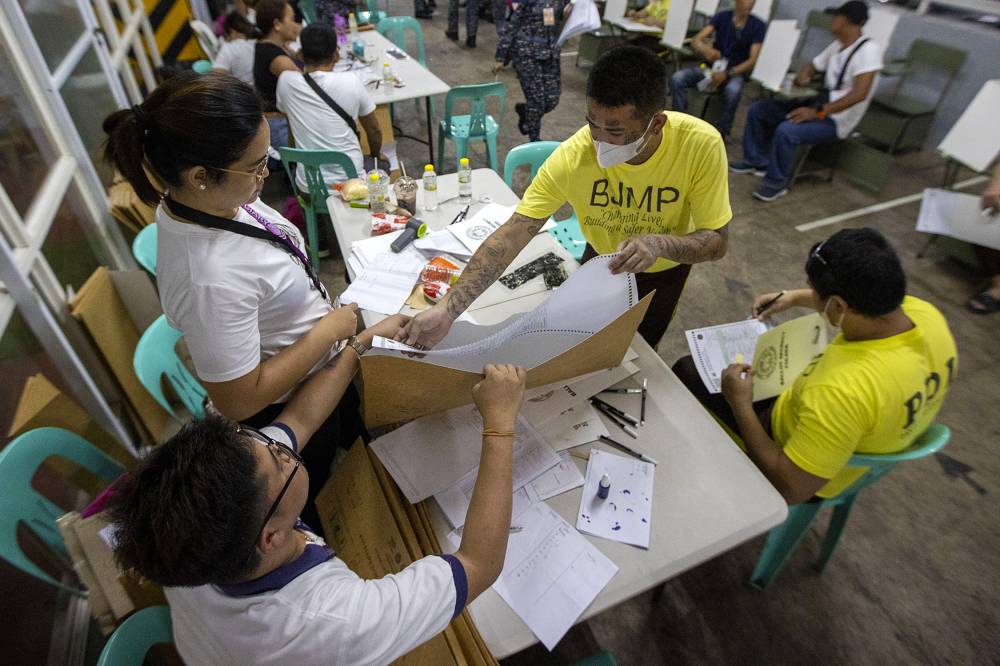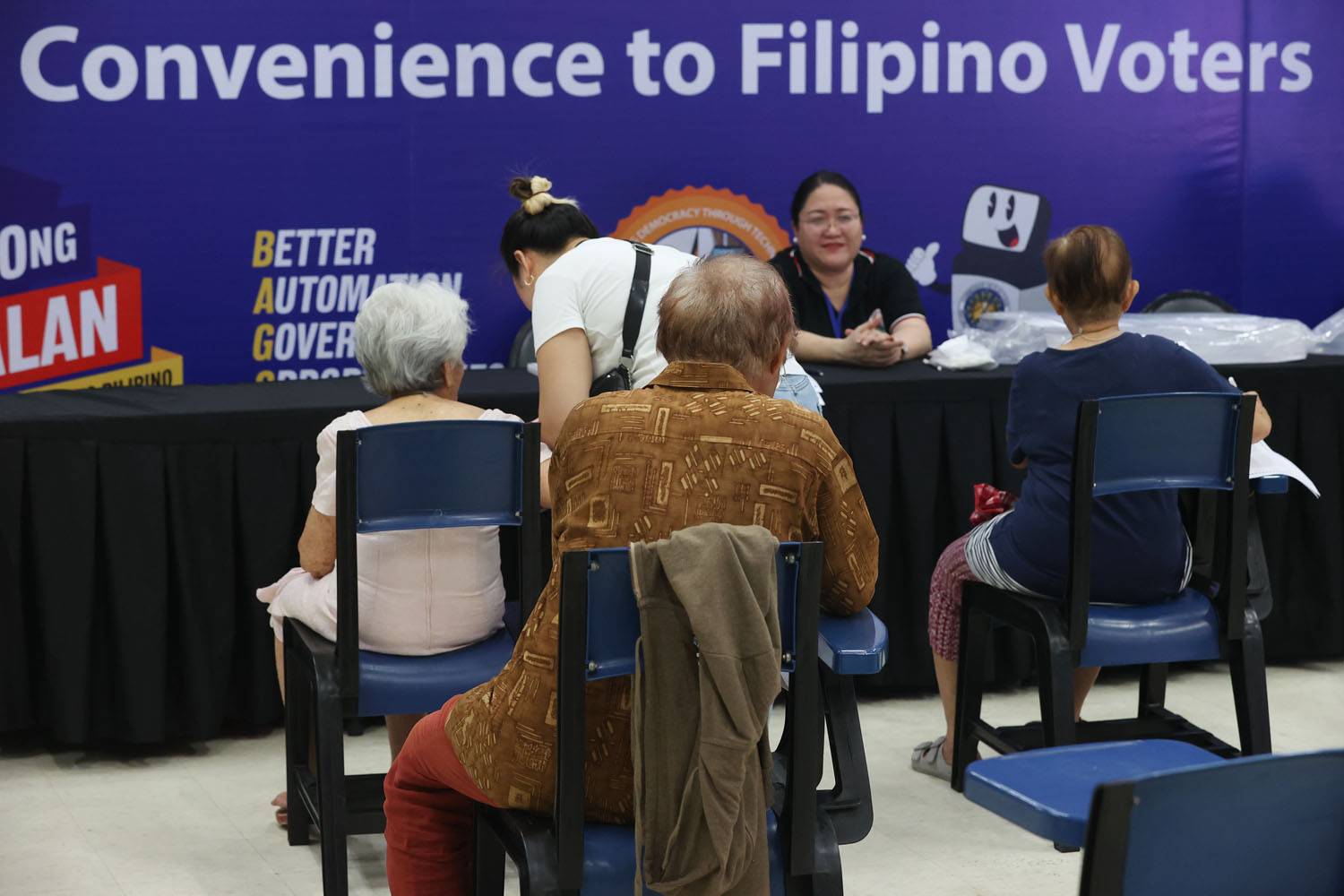ACM glitches, ‘overvoting’ top Election Day woes

Thousands of Filipino voters on Monday left their polling precincts disappointed upon learning they had unknowingly cast their votes for candidates they did not actually vote, or worse, had their votes for a particular post invalidated. These glitches were apparently due to the “high sensitivity” of the new automated counting machines (ACMs) to extraneous marks and smudges on ballots.
While these remain to be unverified claims, accredited citizen’s arm Parish Pastoral Council for Responsible Voting (PPCRV) said it would recommend to the Commission on Elections (Comelec) to return the shading threshold to 25 percent from the current 15 percent.
Local election watchdogs reported a surge of complaints from voters that the ACMs indicated they overvoted even if there were only slight smudges in the oval of the candidates—either due to the ink from the issued markers, or ink from the stamp pad used in affixing a thumb mark on the Election Day Computerized Voters List, which is a prerequisite before voters receive their ballot.
Some also complained about the voter verifiable paper audit trail (VVPAT) or the receipt printed by the ACM to allow voters to verify if their votes were cast correctly.

ACM errors
As of 7 p.m. on Monday, Kontra Daya and Vote Report PH reported that 51.2 percent, or 693 of the 1,362 reports they monitored, were “ACM errors,” which included paper jams, overvoting or rejected ballots, smudging of ink, as well as other issues regarding the high sensitivity of the machine scanner.
The election command center of the Department of Education, meanwhile, said 130 of the 160 election-related complaints it received were “overvoting” cases.
The Legal Network for Truthful Elections (Lente) noted it observed recurring technical issues in several areas, the most common of which involved sensitive scanners that frequently rejected ballots.
President Marcos himself experienced a minor glitch while feeding his ballot into the ACM at San Mariano Marcos Memorial Elementary School in Batac City, Ilocos Norte. The ACM failed to immediately accept his ballot, although it worked on the second try.
Makabayan senatorial candidate Nars Alyn Andamo, founding secretary general of Filipino Nurses United, was able to cast votes except for the party list group due to an ACM error in her polling precinct in Cavite. The VVPAT indicated overvoting despite shading only one party list.
The election officer in her precinct told Andamo that “there was nothing that can be done since it was an error due to the machine,” and they would just include it on their official documentation.
Actor Khalil Ramos also expressed his frustration after his party list vote was invalidated due to overvoting. He said he “pressed a bit too hard” on the front page of his ballot, which left marks on the party list section at the back.

Sensitive ACMs
PPCRV spokesperson Ana Singson said this was the first election year that they received numerous complaints of overvoting and smudging issues since the country shifted to automated elections in 2010.
“But this does not necessarily mean that the [ACMs] are at fault, because we have not yet seen the ballots cast. We do not know if the ballots have marks or smudges, maybe the voter did not know that they have smudged their ballot. The [ACMs] are very sensitive now,” she said.
“What is very clear to us in PPCRV at this point is it seems that the lowering of the threshold to 15 percent is too low. In fact, we are very sure that in our final report, we will recommend to the Comelec that we maintain the original threshold of 25 percent, which was used in 2022,” Singson noted.
Post-election check
In November, the Comelec en banc approved the 15-percent shading threshold on the ballot for the 2025 national and local elections—the lowest since automated election systems were implemented in 2010, following the 2013 elections’ shading threshold which was at 20 percent.
The shading threshold for the 2010 elections was 50 percent but was lowered to 20 percent in 2013. The threshold was increased slightly to 25 percent in the 2016 and 2022 polls.
Singson said the accuracy of the ACMs should be answered by the random manual audit (RMA), which begins on May 14.
RMA is a post-election check to verify the accuracy of automated results by manually counting ballots and comparing them to machine tallies.
Updated software
The Makabayan coalition, meanwhile, claimed that Comelec’s use of an “updated” software for the ACMs likely opened the elections to extensive fraud and voter disenfranchisement.
“The change in the ACM software from version 3.4 to version 3.5, which the Comelec calls the ‘updated’ version, and the difference in the two versions’ hash code create serious doubts on the integrity of the elections and opens up the possibility of widespread fraud and voter disenfranchisement,” it said in a statement.
It said the Comelec should have used the 3.4 version which underwent local source code review and independent certification, raising concerns that the hash codes for the two versions may be incompatible and could affect the ACMs’ accuracy.
They called on the Comelec to “disclose any changes made to the software from version 3.4 to version 3.5, including an explanation of the change in the hash code and why the software version had to be changed from the original version which went through source code review.” —WITH REPORTS FROM DEMPSEY REYES, JEANNETTE I. ANDRADE AND TINA G. SANTOS

















